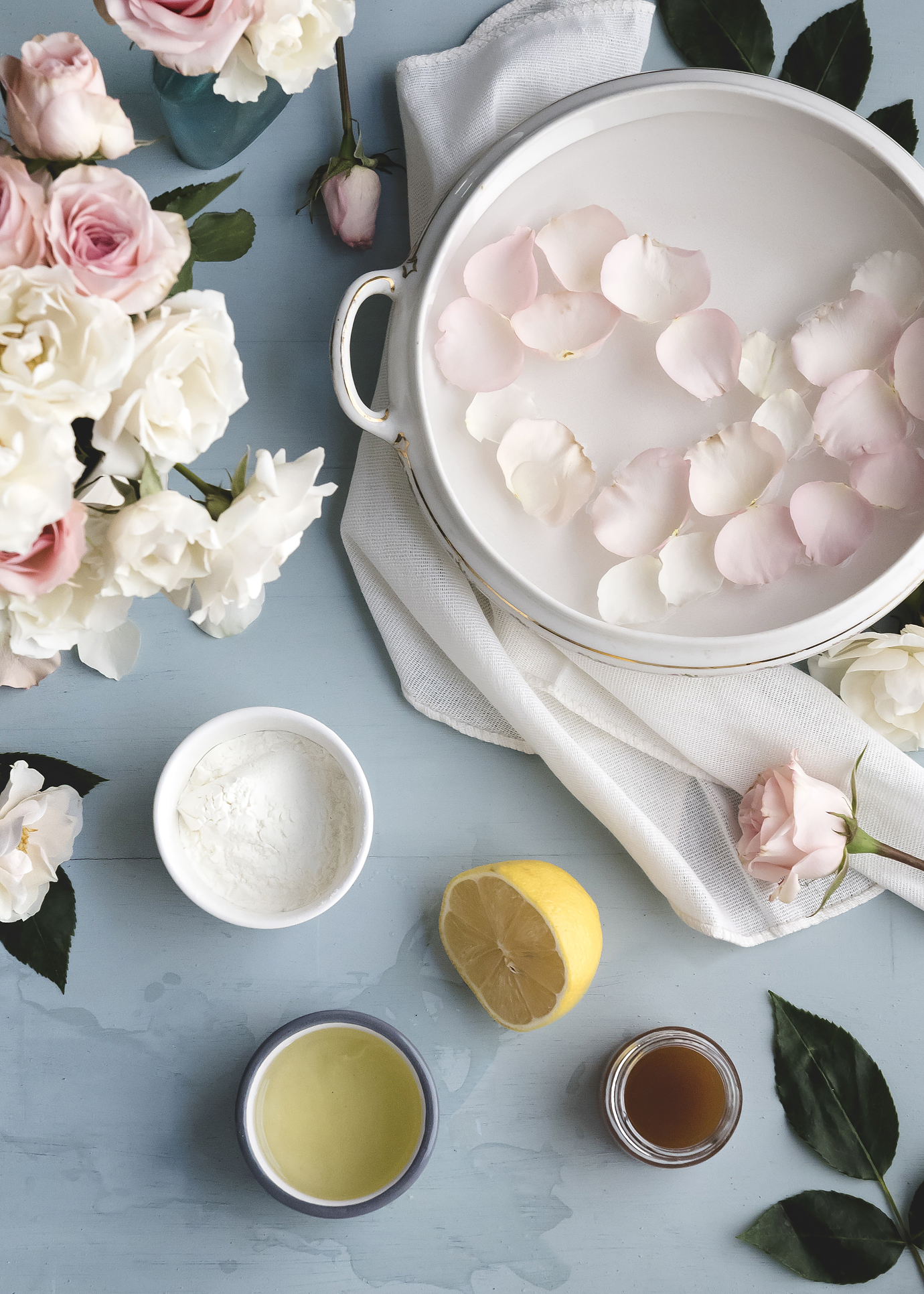
The History of Marie Antoinette’s DIY Face Mask
With effortlessly chic style and a look that’s never contrived, French women possess a certain natural beauty that has become their unique calling card. From Brigitte Bardot to Coco Chanel, many icons come to mind– but no woman is more talked about in French history than the blushing beauty Marie Antoinette, the Hapsburg princess.
Known for her exuberant taste, ash-blonde locks, and rosy cheeks, Marie Antoinette indulged in many elaborate grooming habits, some of which still grace the powder rooms of French women today.
For this week’s GC beauty insight, let’s travel back to Early Modern France for a glimpse into the life, times, and lavish beauty rituals of the “soft-hearted queen.”
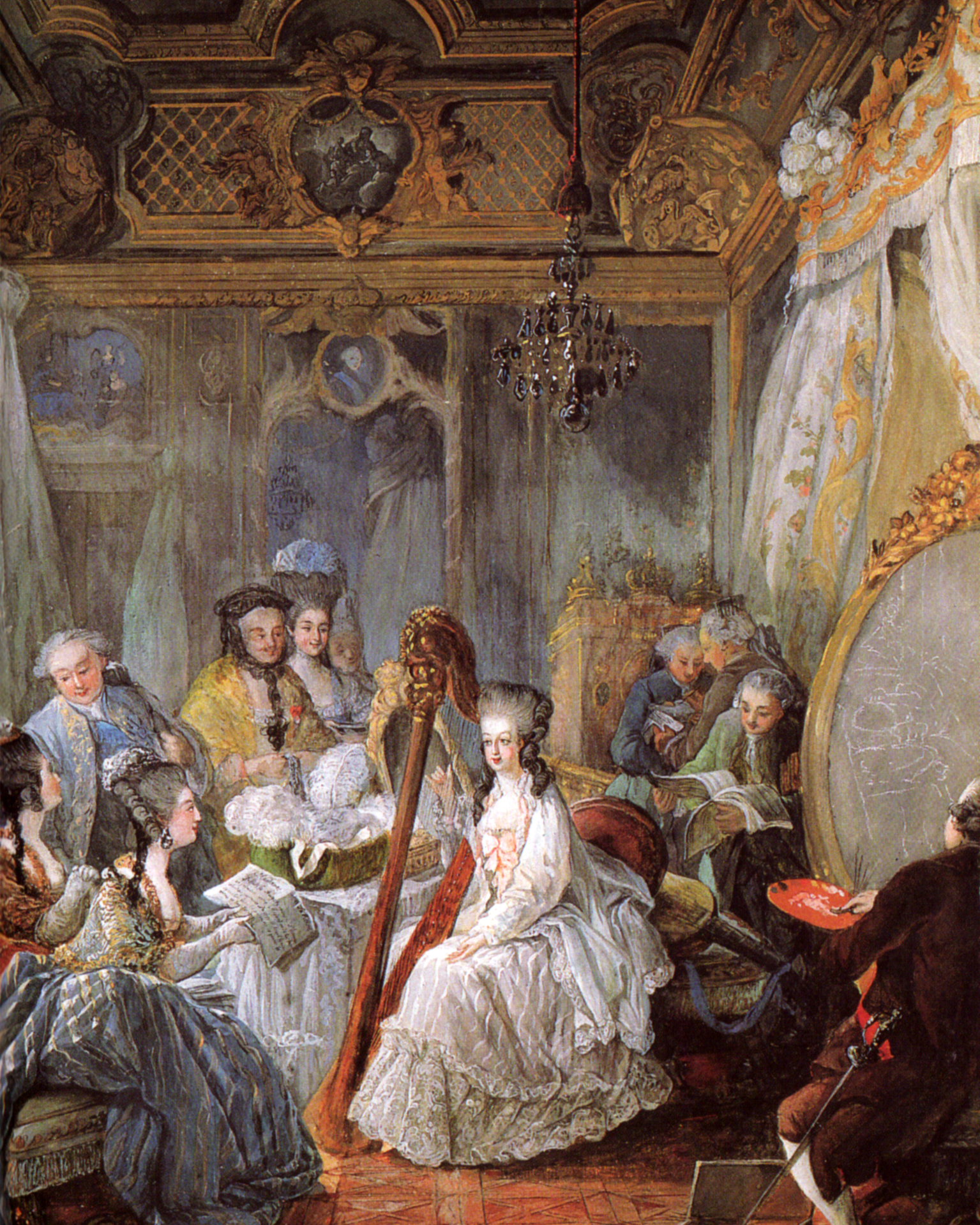
Marie Antoinette dans son salon (by Jean-Baptiste André Gautier-Dagoty, 1774)
Marie Antoinette’s Reign
Born an Archduchess of Austria, Marie Antoinette married Louis XVI of France at the age of 14. This union was largely orchestrated by Marie’s mother, Austrian empress Maria Theresa, who– as Richard Covington writes for Smithsonian— “regarded her eight daughters as pawns on the European chessboard, to be married off to seal alliances.”
But, despite her mother’s political scheming, Marie acquiesced to the marriage and would eventually grow fond of Louis in her own way. Antoinette was immediately embraced by her subjects but, “by the time of her execution 23 years later, was reviled,” writes Richard Covington.
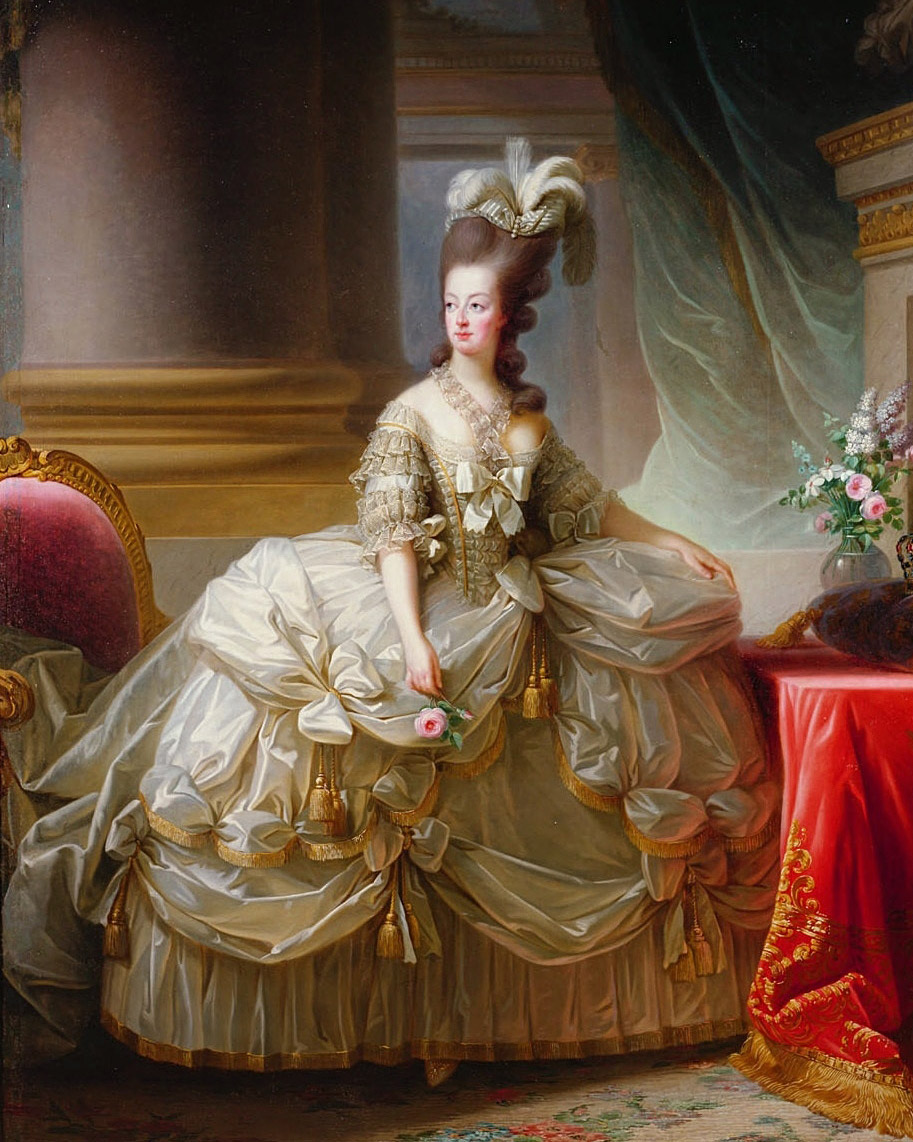
Portrait by Élisabeth Vigée Le Brun, 1778
Marie Antoinette ruled France at a difficult period in history, right on the cusp of the French Revolution. Ravaged by a national financial crisis, the French people grew weary of crushing taxes and the rising cost of bread. These sentiments would eventually embolden the French people to revolt against (and successfully overthrow) the French monarchy.
But “cloistered in the luxury of Versailles,” Covington continues, “the royal couple was oblivious to their subjects’ plight.”
Marie Antoinette’s ignorance to the difficulties of the French people didn’t help her cause when she was accused of participating in a scheme to swindle the crown jewelers. Although she was found innocent, the gossip that ensued “provided further fodder for scandal-mongering pamphleteers and journalists already intent on portraying the queen as greedy and corrupt,” Richard Covington continues.
Her reputation followed her, and so began her unraveling.
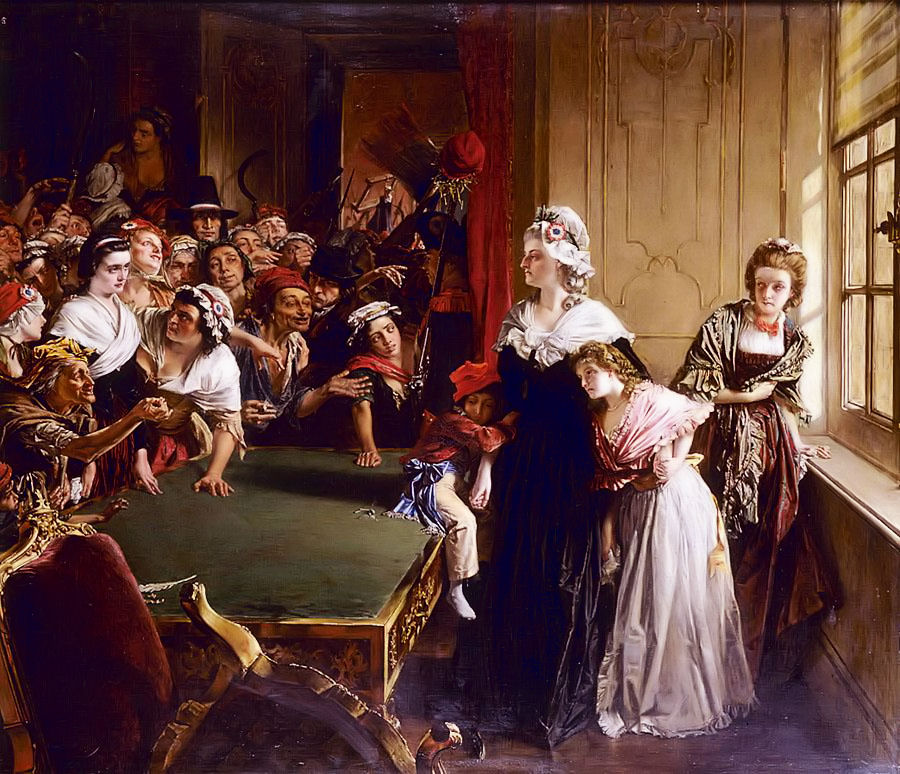
Marie Antoinette with her children and Madame Élisabeth, facing the mob that had broken into the Tuileries Palace on 20 June 1792.
The “Soft-Hearted” Queen
Although the French public thought of her as materialistic and greedy, many now regard Marie Antoinette as a hapless victim of circumstance, torn between the two opposing worlds of decadent, aristocratic power and pluralistic democratic ideals.
Despite her flaws, those who loved Antoinette saw her as courageous, kind, and nurturing– especially her one true love, Swedish military attaché Count Axel Fersen, with whom she exchanged clandestine letters. Perhaps Fersen saw past Marie’s faults and held her in high regard as the “soft-hearted queen” who was capable of great kindness, whether she was tending to an injured peasant or caring for a poor orphan boy.
Royal Beauty Rituals
While she stole away to her private bed chamber for a few moments of solitude, one can only imagine the flurry of thoughts that raced through Marie Antoinette’s mind. Perhaps she relived the “social whirl” of the night before. Maybe she wished to escape from the prying eyes of her subjects. Or perhaps she dreamed about being united with her true love once more.
Marie Antoinette– who never wore an outfit more than once– had tastes for furniture, décor, and clothing that were only rivaled by her lavish beauty rituals.
So then, in her private moments of solitude, Marie did what any queen would do: engage in complete and utter indulgence. Marie Antoinette– who never wore an outfit more than once– had tastes for furniture, décor, and clothing that were only rivaled by her lavish beauty rituals.
Whether she was bathing her skin with linseed, pine nuts, and sweet almonds; dabbing herself with the finest oils and perfumes; or having her “coiffeurs” shape her hair into bouffant styles, Marie had an unquenchable thirst for the finer things in life, Allison Hirschlag suggests in this Mental Floss feature.
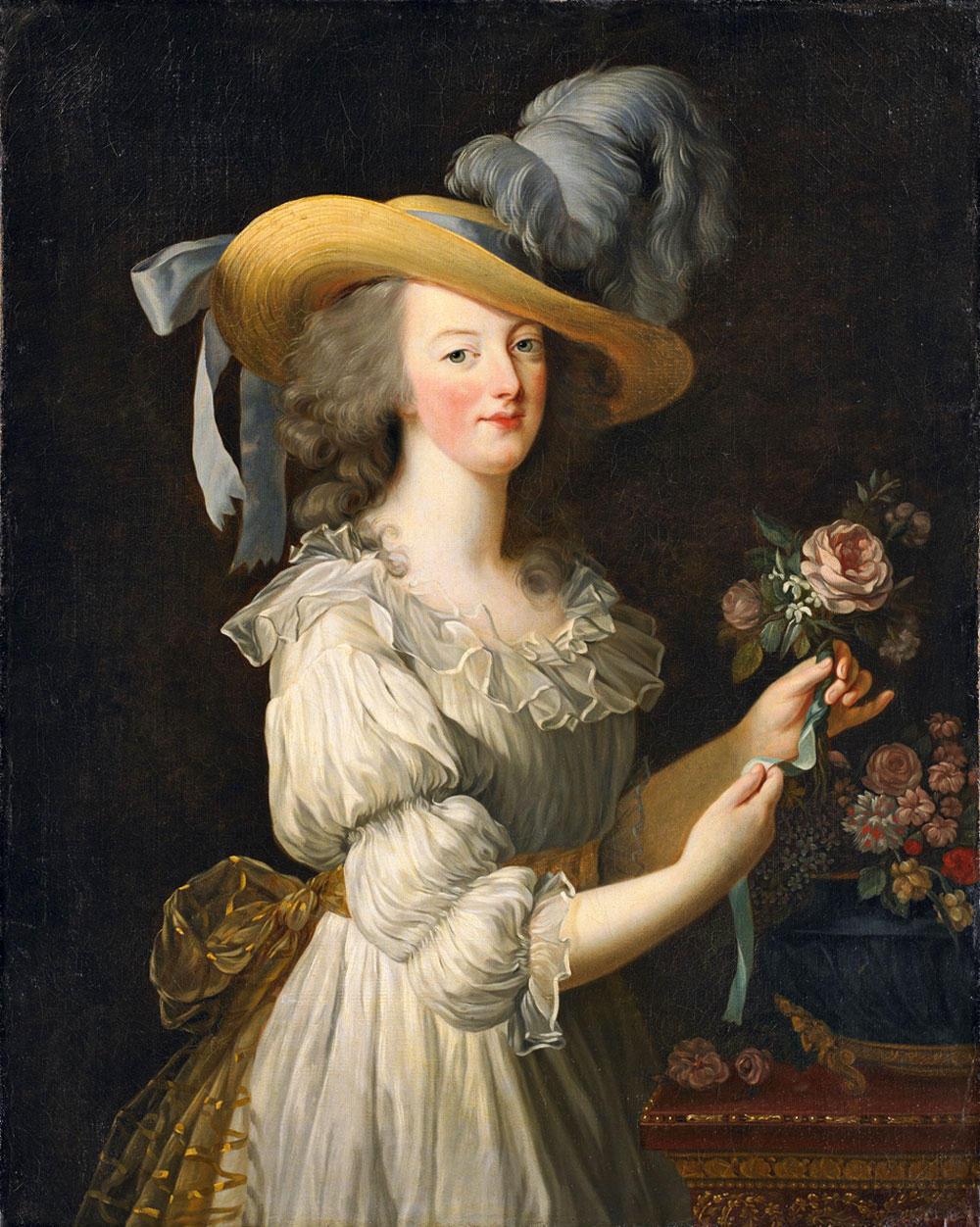
Marie Antoinette en chemise, portrait of the queen in a “muslin” dress. 1783 portrait by Louise Élisabeth Vigée Le Brun.
Marie Antoinette’s Signature Face Mask
By contemporary standards, most of Marie Antoinette’s rituals were rather excessive, but some of her beauty routines were, in fact, surprisingly simple. According to the Beauty Gypsy, Marie Antoinette’s signature face mask consisted of just four ingredients: cognac, one egg, powdered milk, and a lemon.
“Marie Antoinette’s signature face mask is still regularly used by many French women,” BG writes. “Science now underlines what the French court knew 200 years ago: each of these ingredients is a potent element in keeping skin clear and glowing.”
Many French women swear by the skin-soothing benefits of lemon juice, which is believed to tighten pores and naturally exfoliate the skin. Egg whites are, in the words of the Beauty Gypsy, “packed with proteins to repair skin tissue.” Last but not least, powdered milk contains lactic acid, which is oft touted by natural beauty enthusiasts as a gentle exfoliator.
For a skin-soothing treat borrowed from the days of Early Modern France, try the Beauty Gypsy’s version of Marie Antoinette’s signature face mask. After all: you don’t have to come from imperial lineage to feel like royalty.
Ingredients
- juice of 1 lemon
- 1/3 cup [easyazon_link identifier=”B01D4VO58E” locale=”US” tag=”gardcoll03-20″]hormone-free dry milk powder[/easyazon_link]
- 2 teaspoons cognac (or vodka)
- 1 egg white
Preparation
- Blend the ingredients into a smooth paste or stir them together with a fork or wire whisk.
- Apply the mixture to your face and let it dry for about 15 minutes.
- Rinse with warm water and pat your skin dry with a soft towel. Finish with your favorite moisturizer.
- Go barefaced or apply your makeup as usual. For a flushed glow, dust a rosy-pink rouge on the apples of your cheeks.
Sign up for the Garden Collage newsletter and get weekly beauty tips, travel recommendations, home-cooked recipes, and other inspiring environmental news delivered to your inbox each week.


























